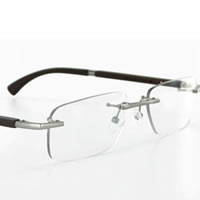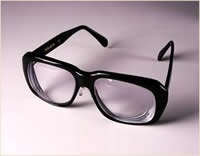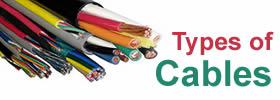Difference between Plastic and Glass lenses
Key difference: Plastic lenses are cheaper, lighter and less likely to break than glass. Glass lenses are more expensive, heavier and scratch resistant that plastic.
 In today’s world, many have eye problems and require the use of glasses. The eyeglass lenses are either made of glass or of plastic, specifically of, polycarbonate, CR-39 (normal plastic), mid-index plastic, and high-index plastic. CR-39 is the most commonly used material these days, polycarbonate is the second. Plastic lenses do however have their advantages and disadvantages as compared to glass lenses.
In today’s world, many have eye problems and require the use of glasses. The eyeglass lenses are either made of glass or of plastic, specifically of, polycarbonate, CR-39 (normal plastic), mid-index plastic, and high-index plastic. CR-39 is the most commonly used material these days, polycarbonate is the second. Plastic lenses do however have their advantages and disadvantages as compared to glass lenses.
Historically, eyeglasses have been made from glass, hence its name. However, CR-39 and polycarbonate have all but replaced glass nowadays. The CR-39 and polycarbonate are lighter and less likely to break than glass. They also allow the glasses to be thinner. Typically with glass, the stronger the prescription of the lens is, the thicker and heavier the glasses are. However, plastics debunk that rule.
Plastics are lighter than glass; CR-39 is at least half the weight of glass, while polycarbonate is even lighter. As glass lenses are heavy, glasses with glass lenses tend to slide down the nose and are more likely to leave impressions on the bridge of the nose.
 Also, plastics are more impact resistant than glass. Glass tends to shatter into tiny little pieces upon impact. These pieces may enter the eye and may do a permanent injury to the eye or even lead to blindness. Polycarbonate lenses are even more impact resistant than CR-39. This is why polycarbonate lenses are recommended for glasses in active sports and motorcycling. Polycarbonate is also used for bulletproof vests and space shuttle windows. Plastics lenses also prevent chipping more effectively than glass.
Also, plastics are more impact resistant than glass. Glass tends to shatter into tiny little pieces upon impact. These pieces may enter the eye and may do a permanent injury to the eye or even lead to blindness. Polycarbonate lenses are even more impact resistant than CR-39. This is why polycarbonate lenses are recommended for glasses in active sports and motorcycling. Polycarbonate is also used for bulletproof vests and space shuttle windows. Plastics lenses also prevent chipping more effectively than glass.
However, glass lenses are more scratch resistant than plastic lenses. Most plastics lenses are treated with scratch resistant coatings, which protect the lenses from scratches and smudges. Despite the coatings, glass lenses are more durable. They also tend to last longer than plastic lenses. CR-39 is more solvent-resistant and scratch-resistant than polycarbonate.
Furthermore, glass lenses tend to have less distortion than plastic lenses. CR-39 lenses provide very little visual distortion as compared to polycarbonate, but they are still not as visually accurate as glass lenses.
However, plastics lenses allow for better transmission of light and absorption of ultraviolet (UV) rays. UV rays can be harmful to the eyes. They may cause a number of eye problems including cataracts and pigmentation. CR-39 lenses are better for low transparency for UV and infrared radiation, while, polycarbonate lenses have a built-in UV protection that stops 99.9% of harmful rays from the sun, fluorescent lights, and computer screens.
Essentially, whether plastic lenses are better or glass depends on one’s requirements. Still, plastic lenses have mostly replaced glass lenses. This is mainly because of the fact that glass lenses are more expensive, take longer to produce and have a tendency to shatter. Plastic lenses, on the other hand, are cheaper, hence easier to replace, faster to produce, and safer than glass lenses, especially for children, who are forever dropping their glasses.
Image Courtesy: askmen.com, simoneye.com









Add new comment